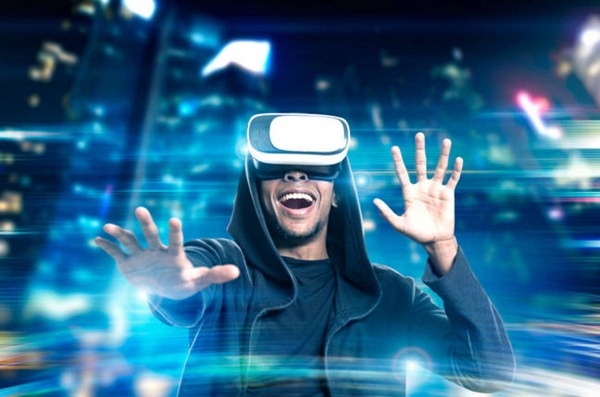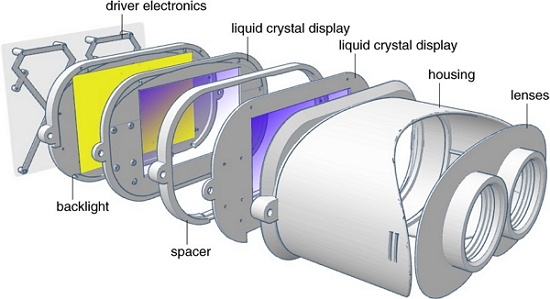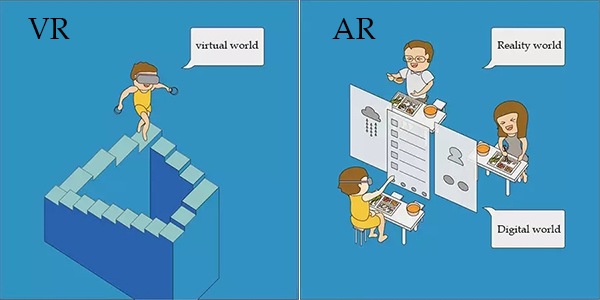Definition of VR (Virtual Reality)
Technological advances are increasingly rapid, making people more creative to create a variety of technologies that can make users feel the virtual world more real.
One of the technologies that is being talked about is virtual reality technology that is able to bring users disconnected from the real world and enter the virtual world with a variety of stunning visual displays.
Want to know more about virtual reality technology? See the following article to understand the meaning of VR (Virtual Reality) along with the history and how it works.
Virtual reality is a technology that contains computer simulations about the state of an environment and makes users as if they can interact with the environment.
When someone equips himself with various types of virtual reality equipment, as if the five senses are able to feel truly in that environment, even if the equipment is released, it will be felt that in fact the world is only a virtual world that is very similar to reality.
A virtual reality system is usually equipped with a variety of equipment that supports users to feel the artificial sensation of the environment, for example by using a headset and various other physical properties that depend on the details of the virtual reality environment.
Development of Virtual Reality
In general, VR has been developed for a long time, precisely starting from the 1800s. The following shows VR history from the beginning to the present.
In general, VR has been developed for a long time, precisely starting from the 1800s. The following shows VR history from the beginning to the present.
- 1800s - Ideas began to emerge to create an alternative reality along with the emergence of the practice of photography.
- 1838 - The first stereoscope was found to use two twin mirrors to project an image.
- 1839 - The stereoscope was developed into View-Master and later patented a century later in 1939.
- 1956 - Morton Heilig, who has a background in the Hollywood Motion Picture industry, begins to want people to be able to feel the atmosphere like getting into a movie. Made a Sensorama simulation that can make users feel the atmosphere of the urban environment like riding a motorcycle. Already equipped with multisensor stimulation, so that users are able to see the road, hear the motorbike engine sounding, feel the vibration of the motorbike, and smell the engine smell in a technology-designed world.
- 1960 - Morton Heilig then patents equipment called the Telesphere Mask. Many investors are then interested in cooperating.
- Mid 1980 - The term "virtual reality" begins to be used. It was Jaron Lanier, founder of VPL Research who began developing virtual reality equipment, including goggles and gloves needed by someone to experience the VR experience.
- Now - After six decades of being developed with the help of investor funds, VR can now be enjoyed widely at an economical price, using high-quality equipment that is easily accessible.
How it works Virtual Reality (VR)
Virtual reality works by manipulating the human brain so that as if feeling virtual things feels like a real thing. You could say, virtual reality is the process of eliminating the real world around humans, then makes the user feel led into a virtual world that is not in touch with the real world.
To be able to do this, of course various enhancements are needed. At a minimum, if you want to feel into the realm of virtual reality, you need a VR headset, such as what is now widely found on the market is Oculus Rift or Samsung Gear VR.
In plain view, this VR headset is shaped like diving glasses, but with a closed lens. This part, like diving glasses, is called a VR box, which is a place to put a smartphone that functions to project virtual images. VR that uses this smartphone is a standard version of VR devices.
Different for example with VR headsets that already use advanced technology such as Oculus Rift, in which it no longer uses smartphones, but there is already a screen that displays video and virtual reality images that can also be connected to a computer using bluetooth.
The VR headset is also equipped with headphones to add sound effects, as well as a device in the hand (joystick) that is connected to a VR headset to further enhance interaction between users and things in the virtual world that will be entered. When the VR headset is installed, then the user can feel for himself that the reality around him is disappearing and changing into the virtual world. Oculus Rift for example, utilizes two displays to be projected into the user's eyes. The two displays are then combined by the brain to produce three-dimensional images that make the user feel like the virtual world is really in front of him.
When you are in the virtual world, users can view virtual images with unlimited viewing angles: sideways, back, up, down, up to 360 degrees. The type of virtual world that users can enter into is very diverse, ranging from games, seeing life in the forest, there is even a virtual action world that requires users to actively move when using VR.
The difference between VR and AR
Although both make users feel the virtual world, VR and AR have quite distinct differences. Virtual reality works by breaking the contact of the human senses with the real world, while augmented reality works by combining the real world and the virtual world.
VR users need special devices to truly eliminate the real world around them, while augmented reality only requires a smartphone to run. A simple example of augmented reality is the Pokemon Go game that was booming some time ago. To play it, users only need to capitalize on a smartphone that can then unite the real world with a virtual world containing various kinds of Pokemon.
That is a complete explanation of the understanding of VR along with how it works and a brief history of how this VR can appear. Hopefully the emergence of VR continues to grow and can support human activities.
Source :
https://www.nesabamedia.com/pengertian-vr-virtual-reality/
https://www.nesabamedia.com/pengertian-vr-virtual-reality/




0 comments